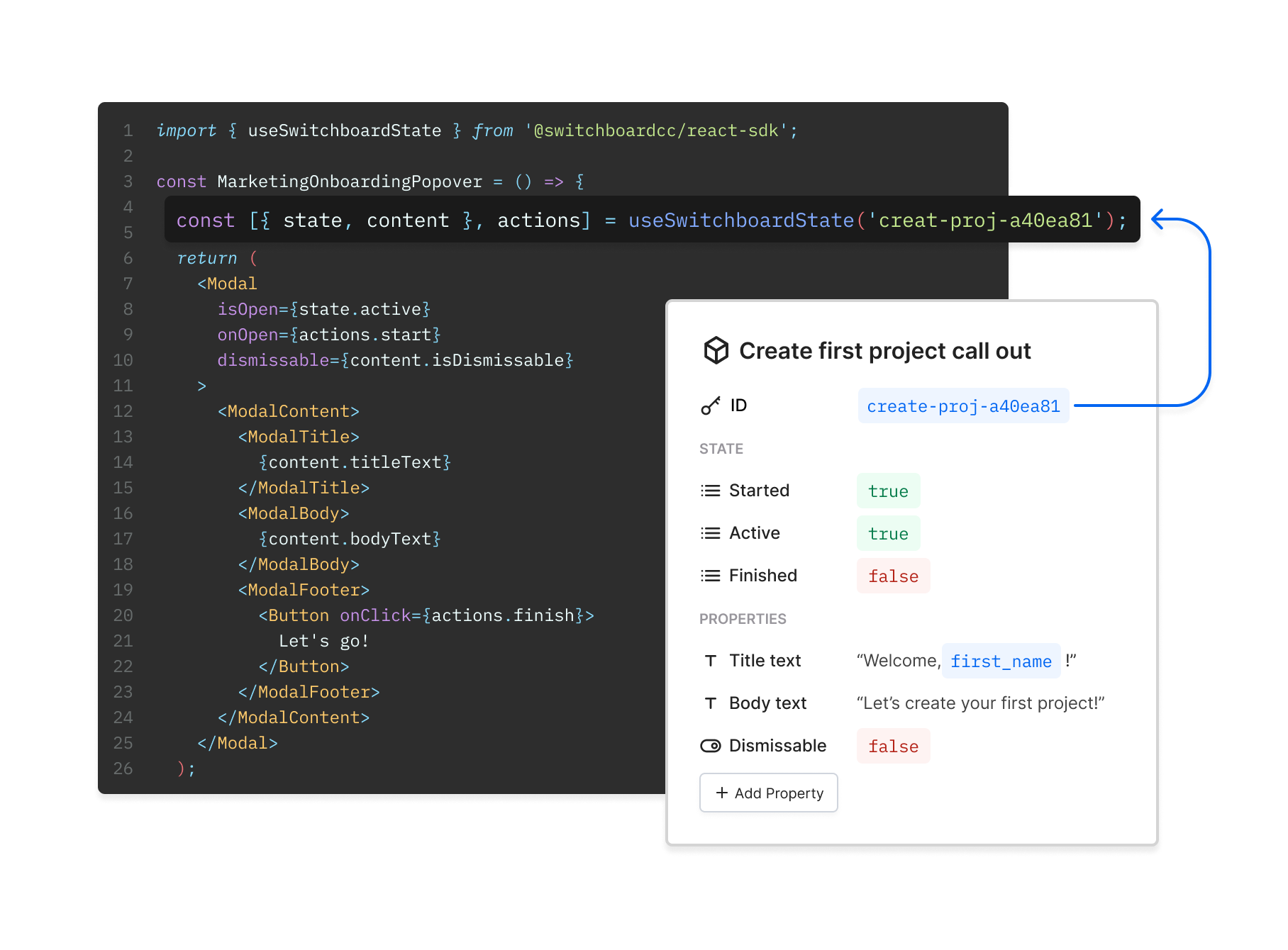
Announcing Switchboard
- March 30, 2022
- 4 min read
The age of product-led growth
Product-led growth has been having its moment in the sun. OpenView coined the term, putting a name to what companies like Dropbox, Slack, and Airtable have done to successfully scale their businesses: build growth engines directly into their products.
The benefits to the model are clear: acquiring customers is cheaper, growing them is easier, and value for end-users becomes tightly coupled with a business’ success. Good product leaders recognize this and are working on getting their products into users’ hands with less friction — forming product growth teams to make it happen.
These teams are granted broad ownership of users’ end-to-end journeys and bring together engineering, product, design, and (increasingly) go-to-market. To succeed at their charters, they must understand how users flow through their products and find ways to quickly connect them to value.
There’s a pervasive myth that if you “just build your product right,” users will figure everything out on their own (e.g., Snapchat’s UI). This simply isn’t true for B2B SaaS products which are complex and support a variety of needs of a variety of users. They are, without exception, better served by thoughtful experiences that help orient users and complement quality design.
The best growth teams understand this and strive to create:
- Tailored onboarding that gets new users to reach an “aha moment” quickly, driving better activation

- Helpful callouts that let users discover new features and make them aware of faster ways of accomplishing their tasks, driving deeper engagement

- Well-timed upsells and cross-sells that keep users from feeling stuck by showing them paid capabilities and related products only once they need them, driving revenue

Yet it’s incredibly challenging to create these “growth experiences” — we’ve heard the same challenges repeated by over two hundred growth product and engineering practitioners. Here’s what we’ve learned.
Great product growth experiences are out of reach
Historically, when teams needed to create one of the growth experiences mentioned above, they’d reach for a “digital adoption platform” like Pendo, Appcues, or Chameleon that lets non-developers bolt them onto their products.
Their approach comes at a cost. They stick out like a sore thumb and users reflexively dismiss them, associating them with all of the other bad tacked-on flows they’ve been subjected to. They’re also not really self-service. Developers have zero visibility into what’s gets added to their products yet are constantly asked to troubleshoot and intervene, adding proxies, CSS selectors, and events to get anything to show up correctly. The reality is that product-led companies compete on user experience and no longer find these tools sufficient, disqualifying them out of hand.
Left with no alternative, growth teams build in-house but quickly discover that this path is fraught too. Crafting an effective product growth experience requires constant iteration and experimentation. Teams need to rapidly test new modalities, copy, timing, and ways of segmenting users, all while the product changes underneath. What starts as simple becomes unmanageable — the cost and complexity of keeping track of and defining “who should see what, when” explodes.
Developers bear the brunt of this pain too.
Why is this so hard?
- The logic and timing of growth experiences are complex and hard to develop, resulting in poorly integrated knots of conditional logic that slow down product development for everyone
- Methods to keep track of “who’s seen what” don’t scale — early compromises like storing state in local storage fail as requirements grow and the database tables teams move to become impossible to migrate as new columns get appended each iteration
- Customer data required to tailor experiences for different types of users is hard to access, living across many systems and requiring costly integrations to make use of
- Teams lack the controls they need to orchestrate experiences and keep users from getting spammed
- Non-technical teammates don’t have visibility and can’t self-serve on targeting and content, so every change needs a spec that developers have to develop and push manually
Ultimately code quality deteriorates, teams slow down, and lofty aspirations are brought back to reality. Business results get left on the table and users suffer.
Switchboard, a developer-first platform for building product experiences that drive growth

As a founding team, we've lived these challenges. At Dropbox, Phil led growth design and saw how impactful (yet hard to orchestrate) growth experiences are at scale. At Amplitude and Productboard, I built products for product development teams, helped get new growth teams off the ground, and saw how hard it is to get growth right. At Patreon (and throughout his career), Joe has championed developer experience, having seen the drag that integrating poorly thought out products has on an engineering organization.
We’ve learned that we’re not alone in the hundreds of conversations we’ve had since starting Switchboard. Growth teams everywhere are struggling; every organization has to reinvent the wheel and build costly platforms or cobble together tools not designed for them to solve these problems.
We started Switchboard to equip developers with tools to create high-quality product experiences that activate and engage users. At the same time, we empower partners in product, design, and go-to-market with the visibility and control they need to determine who should see what, when.
Think of us as a layer beneath the interface, a platform for the logic and content that drives your product’s UI components.
We’re working hard on:
- A visual flow builder that lets the whole team collaboratively define logic and content — allowing developers to stay in the loop, their cross-functional partners to self-serve, and everyone to meaningfully contribute towards thoughtful, tailored experiences
- SDKs and APIs that plug into your UI components, make it easy to access customer data, and abstract away flow state & content — granting developers complete control over the experience, speeding up iteration, and allowing the team to experiment more
- A platform that grows with you; letting you reach for templated best practices, analyze results to determine what works for your product, and orchestrate competing experiences as you scale

We’ve seen the impact that great experience has on growth, like a new centralized home for onboarding we released at Productboard that doubled trial conversion. The reality, of course, is that not everything works, and results are often surprising. To win, growth teams need to ship fast to learn fast. They need tools that enable them to move quickly without stifling their creativity.
We believe that Switchboard will fundamentally change how companies approach creating product growth experiences. We’re giving tools that have historically been available to a handful of leading companies to all — enabling more businesses to drive sustainable growth without eroding user trust.
Sign up for a free account
We’re working with a small group of like-minded design partners as we build Switchboard. If our approach is compelling, get started and sign up for a free account!
Join the team
We’re hiring! Check out our careers page or send us a note at jobs@switchboard.cc if you’re interested in getting to know us.

Thank you to Sandhya Hegde, Scott Woody, Ian Storm Taylor, Jesse Miller, Allen Kleiner, Phil Vander Broek, Joe McKenney, Carlos Santillana, and Alex Chan for giving feedback on drafts of this post.
